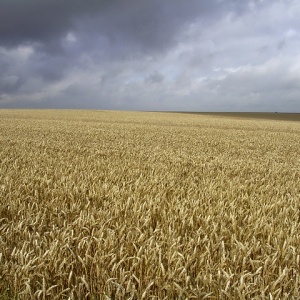This paper investigates whether current yield trajectories are adequate to achieve the production increases that many forecasts suggest are needed on existing farmland. The results indicate that the majority of global cereal crops such as rice, wheat and corn may have reached their maximum possible yields. Six statistical models were analysed to identifying the most appropriate shape of historical yield trend and the analysis makes it possible to estimate in which countries and regions yields are flat, rising, declining or plateauing.
Previous analysis of historical crop yield trends are based on the assumption that global rates of yield increase in the majority of cereal crop species will be constant, but recent studies suggest that these cereal crops have recently decreased or plateaued. This is especially evident in many of the most intensively cropped areas of the world, including eastern Asia, Europe and the United States. Historically, the authors argue that positive yield trends have been achieved by rapid adoption of new technology, and such innovation and trends may not be possible to reproduce.
By using a statistical framework the researchers evaluate historical yield trends of major crop-producing countries since 1965. They find that estimates of future crop production and land use must consider both historical yield trends and biophysical yield ceilings to improve forecasting capability.
Abstract
Food security and land required for food production largely depend on rate of yield gain of major cereal crops. Previous projections of food security are often more optimistic than what historical yield trends would support. Many econometric projections of future food production assume compound rates of yield gain, which are not consistent with historical yield trends. Here we provide a framework to characterize past yield trends and show that linear trajectories adequately describe past yield trends, which means the relative rate of gain decreases over time. Furthermore, there is evidence of yield plateaus or abrupt decreases in rate of yield gain, including rice in eastern Asia and wheat in northwest Europe, which account for 31% of total global rice, wheat and maize production. Estimating future food production capacity would benefit from an analysis of past crop yield trends based on a robust statistical analysis framework that evaluates historical yield trajectories and plateaus.
Citation
Grassini, P., Eskridge, K. M., Cassman K. G., Distinguishing between yield advances and yield plateaus in historical crop production trends. Nature Communications, 2013, 4 DOI: 10.1038/ncomms3918
To read the full article online in Nature communications, click here.
For other studies that discuss how far yield increases might be possible and/or the impact of climate change on yields see here.
For statistics on food security see here while studies focusing on agricultural projections can be found here.




Post a new comment »